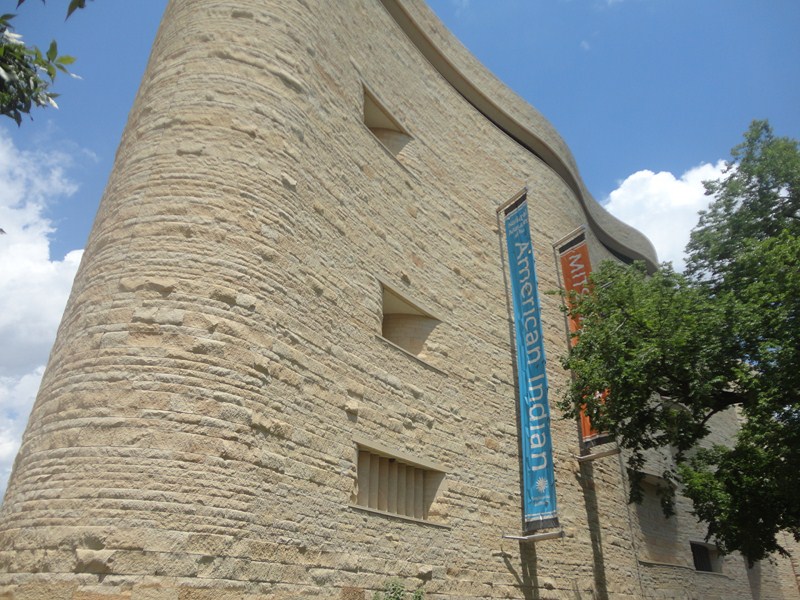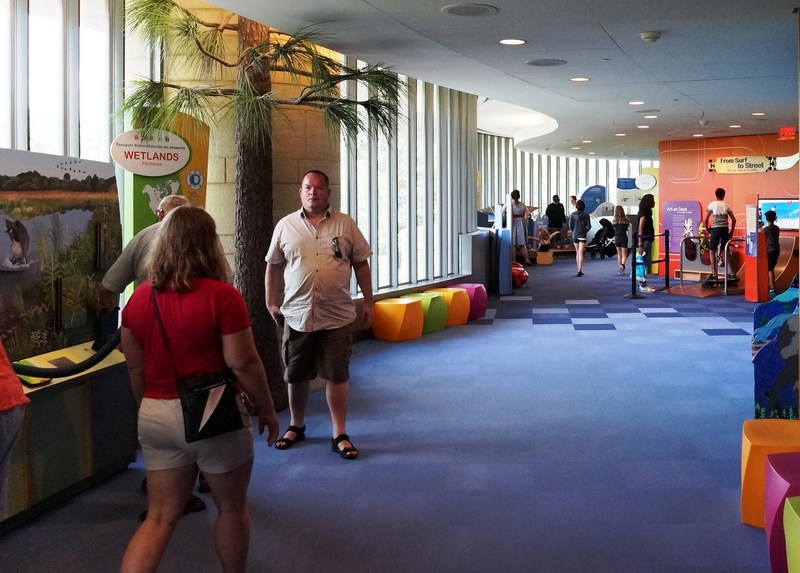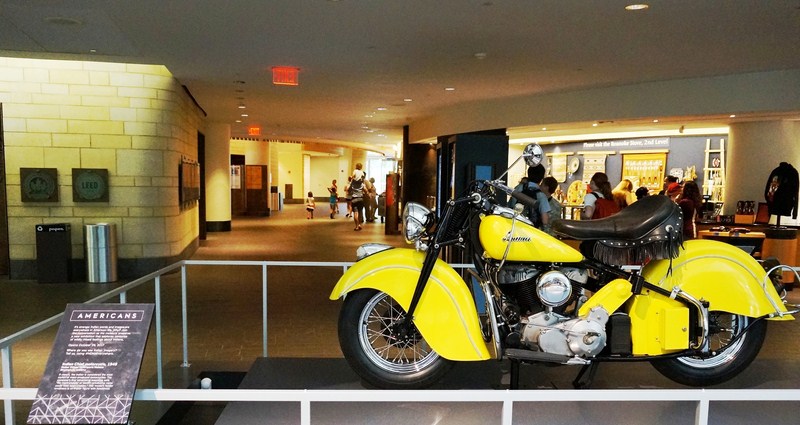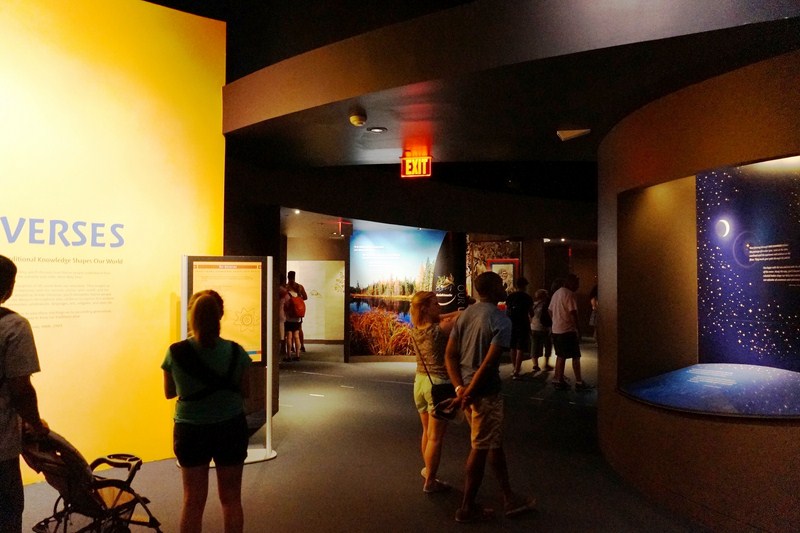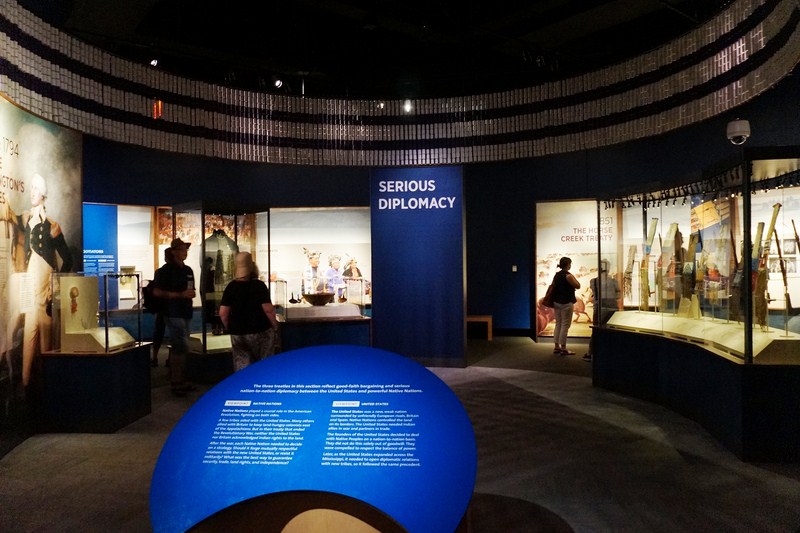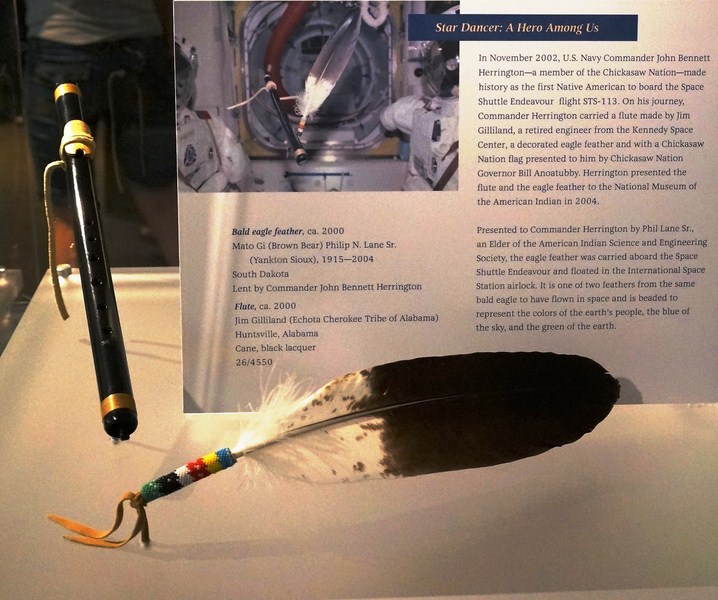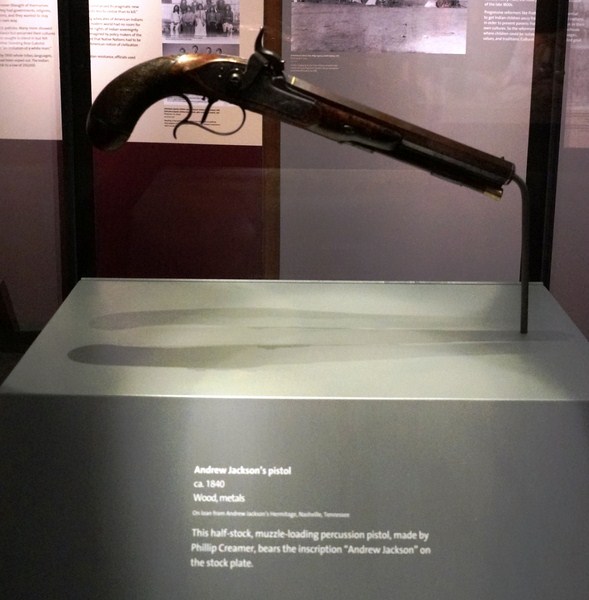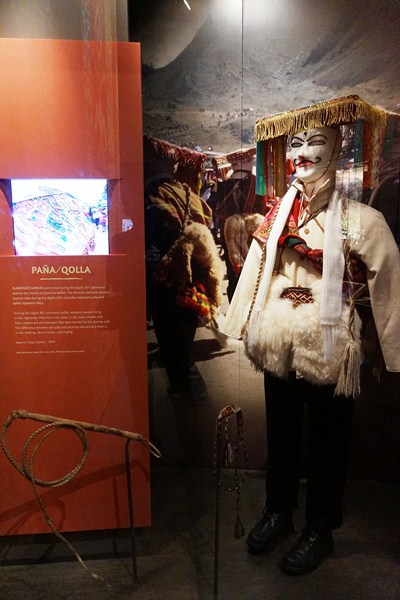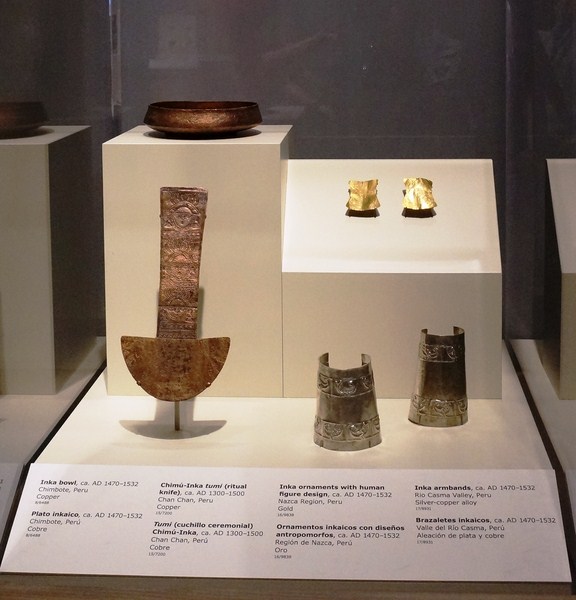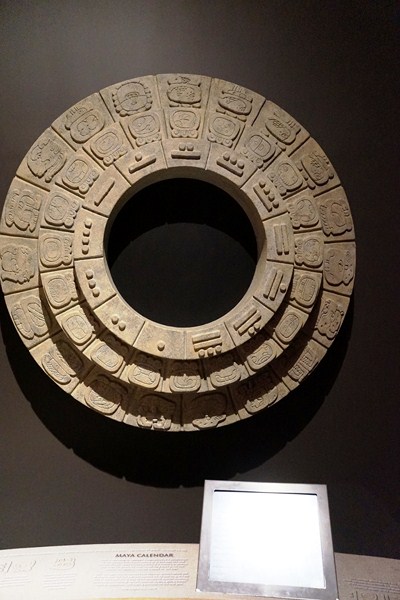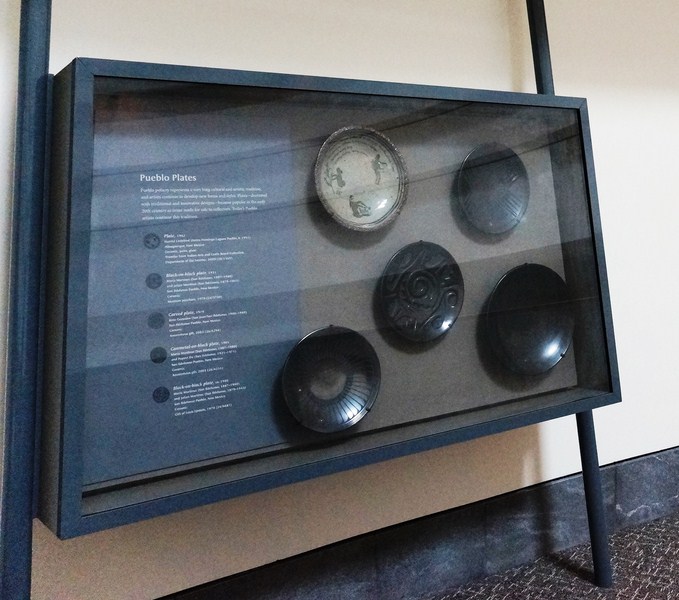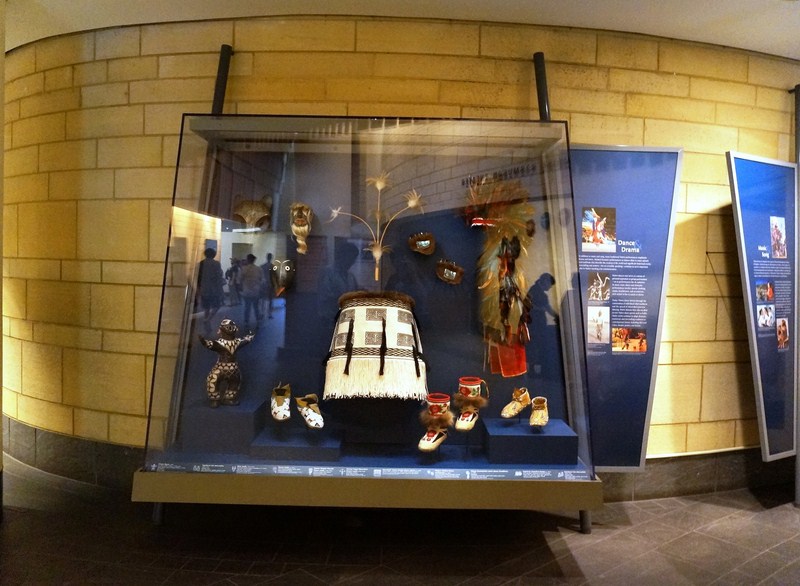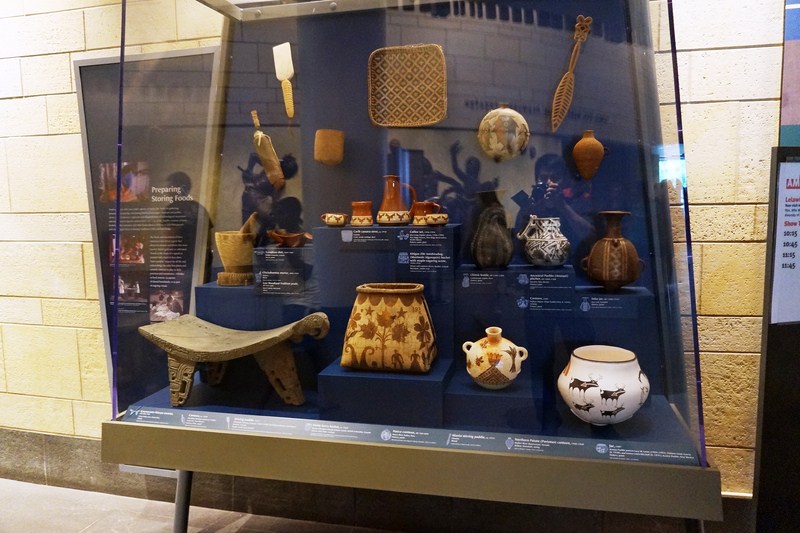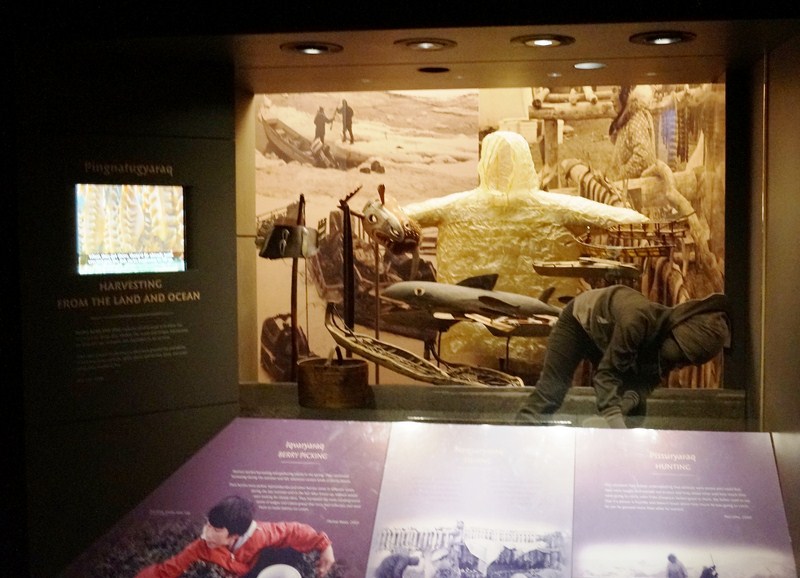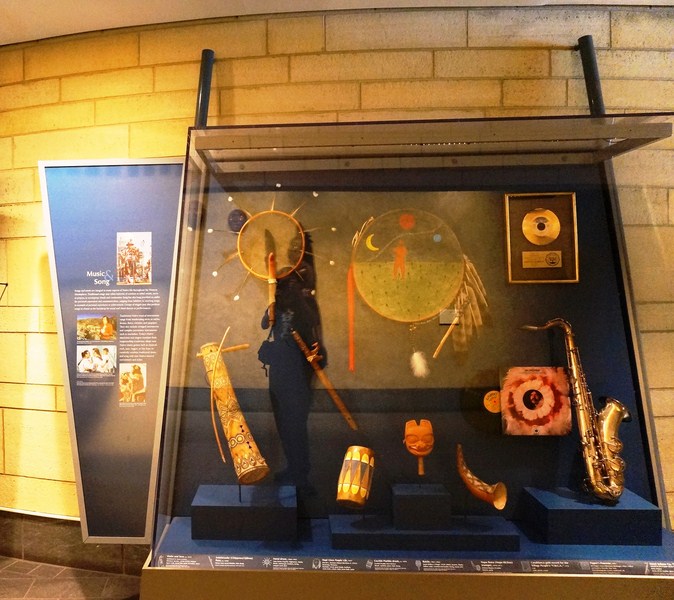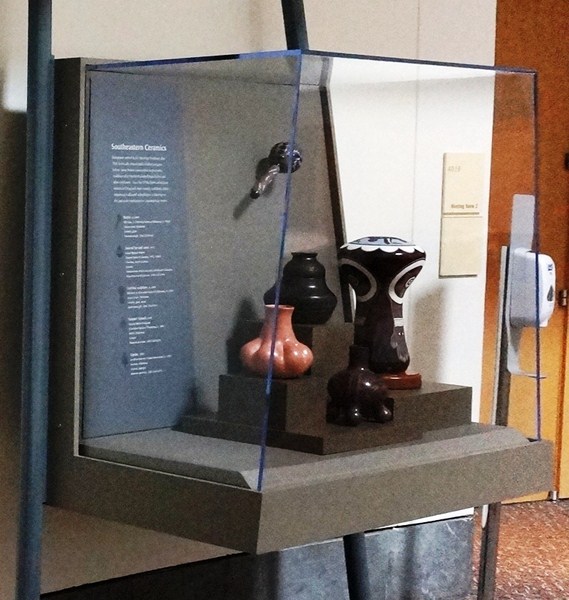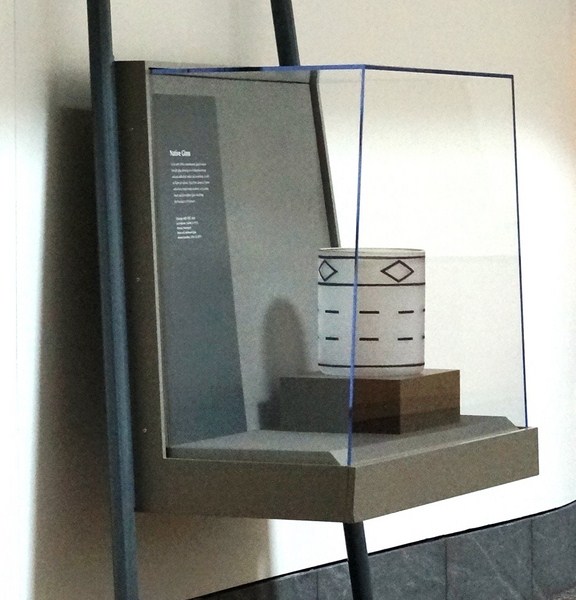From the Botanic Garden, Jandy and I proceeded to the National Museum of the American Indian (NMAI), the first national museum in the country dedicated exclusively to Native Americans. Part of the Smithsonian Institution, it is committed to advancing knowledge and understanding of the past, present, and future of Native cultures of the Western Hemisphere, through partnership with Native people and others.
Aside from this museum, the National Museum of the American Indian also has two other facilities – the George Gustav Heye Center (a permanent museum in Lower Manhattan, New York City) and the Cultural Resources Center (a research and collections facility in Suitland, Maryland).
Though it was a weekend, there wasn’t a long line of visitors wanting to enter the building (although the museum had 2.4 million visitors in 2004, the year it opened, it has averaged only 1.4 million in the years since due to its exhibits that feel “disjointed and incomplete”) but we were still all subjected to a security check.
The five-storey, 23,000 m2 (250,000 sq. ft.) curvilinear building, set in a 17,200 m2 (4.25-acre) site, is clad in golden-colored Kasota limestone, designed to evoke natural rock formations shaped by wind and water over thousands of years, and is surrounded by simulated wetlands.
Fifteen years in the making, the museum was inaugurated on September 21, 2004 with an audience of around 20,000 American Indians, Alaska Natives and Native Hawaiians, the largest gathering of indigenous people in Washington D.C. to its time.
The museum’s design architects are GBQC Architects of Philadelphia and Severud Associates was the structural engineering firm chosen for this project. Project architects are Jones & Jones Architects and Landscape Architects Ltd. of Seattle and Smith Group of Washington, D.C., in association with Lou Weller (Caddo), the Native American Design Collaborative, and Polshek Partnership Architects of New York City. The landscape architects are Jones & Jones Architects and Landscape Architects Ltd. of Seattle and EDAW, Inc., of Alexandria, Virginia.
Aiming to create a different atmosphere and experience from museums of European and Euro-American culture, Native Americans, in general, have filled the leadership roles in the design and operation of the museum.
Canadian Douglas Cardinal, the museum’s architect and project designer, is Blackfoot. During construction, disagreements led to Cardinal’s removal from the project, but the building retains his original design intent and, during the museum’s construction, he provided continued input. Architect John Paul Jones is Cherokee/Choctaw while Ramona Sakiestewa (Hopi) also served as design consultant. Donna E. House (Navajo/Oneida) was the botanist who supervised the landscaping.
The museum’s sweeping curvilinear architecture, its indigenous landscaping, and its exhibitions were also all designed in collaboration with tribes and communities from across the hemisphere, combine to give visitors from around the world the sense and spirit of Native America.
The landscape flows into the building and the theme of organic flow is reflected by the interior of the museum, whose walls are mostly curving surfaces, with almost no sharp corners. The museum’s east-facing entrance, its prism window and its 37 m. (120-ft.) high space for contemporary Native performances are direct results of extensive consultations with Native peoples.
The museum’s collection, assembled by George Gustav Heye (1874–1957) during a 54-year period (beginning in 1903, he traveled throughout North and South America collecting Native objects), became part of the Smithsonian in June 1990.
Approximately 85% of the holdings of the NMAI, it includes more than 800,000 objects (one of the world’s largest and most diverse collections of its kind), as well as a photographic archive of 125,000 images. The collection is divided into the following areas: Amazon; Andes; Arctic/Subarctic; California/Great Basin; Contemporary Art; Mesoamerican/Caribbean; Northwest Coast; Patagonia; Plains/Plateau; Woodlands.
The museum currently has 5 exhibits. Americans (January 18, 2018–2022), highlighting the ways in which American Indians have been part of the nation’s identity since before the country began, features pervasive, powerful and, at times, demeaning American Indian images (from the Land O’Lakes butter maiden to the Cleveland Indians’ mascot, and from classic Westerns and cartoons to episodes of Seinfeld and South Park), names (from state, city, and street names to the Tomahawk missile) and stories (historical events of Pocahontas’ life, the Trail of Tears, and the Battle of Little Bighorn) that reveal the deep connection between Americans and American Indians as well as how Indians have been embedded, in unexpected ways, in the history, pop culture, contemporary life and identity of the United States.
The Great Inka Road: Engineering an Empire (June 26, 2015–June 1, 2020) explores the foundations of the more than 20,000 mile long Inka Road (which stands as one of the monumental engineering achievements in history) in earlier Andean cultures, technologies that made building the road possible, the cosmology and political organization of the Inka world, and the legacy of the Inka Empire during the colonial period and in the present day.
Crossing mountains and tropical lowlands, rivers and deserts, the Great Inka Road, recognized by UNESCO as a World Heritage site in 2014, linked Cusco, the administrative capital and spiritual center of the Inka world, to the farthest reaches of its empire and continues to serve contemporary Andean communities across Colombia, Ecuador, Peru, Bolivia, Argentina and Chile.
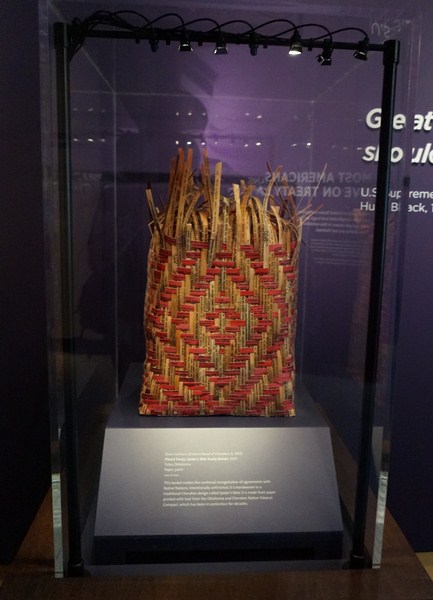
Shan Goshorn (Eastern Band of Cherokee, b. 1957). Pieced Treaty Spider’s Web Treaty basket, 2007. Tulsa, Oklahoma.
Nation to Nation: Treaties Between the United States and American Indian Nations (September 21, 2014–Through 2021), curated by Indian rights activist Suzan Shown Harjo, is built around the 1613 Two Row Wampum Treaty which, as museum reviewer Diana Muir Appelbaum points out, is, in fact, a modern forgery. ” It is the story of that relationship between Indian Nations and the United States, including the history and legacy of U.S.–American Indian diplomacy, from the Colonial Period through the present, as well as about the equally important and influential Native diplomats and leaders of Indian Nations.
Our Universes: Traditional Knowledge Shapes Our World (September 21, 2004–September 2020) focuses on indigenous cosmologies (world views and philosophies related to the creation and order of the universe) and the spiritual relationship between human kind and the natural world. Organized around the solar year, the exhibition introduces visitors to indigenous peoples from across the Western Hemisphere who continue to express the wisdom of their ancestors in celebration, language, art, spirituality and daily life.
The community galleries feature eight cultural philosophies—those of the Pueblo of Santa Clara (Espanola, New Mexico, USA), Anishinaabe (Hollow Water and Sagkeeng Bands, Manitoba, Canada), Lakota (Pine Ridge Reservation, South Dakota, USA), Quechua (Communidad de Phaqchanta, Cuzco, Peru), Hupa (Hoopa Valley, California, USA), Q’eq’chi’ Maya (Cobán, Guatemala), Mapuche (Temuco, Chile), and Yup’ik (Yukon-Kuskokwim Delta, Alaska, USA).
The design of these galleries reflects each community’s interpretation of the order of the world.The exhibition also highlights the Denver (Colorado) March Powwow, the North American Indigenous Games, and the Day of the Dead as seasonal celebrations that bring Native peoples together.
At the ongoing compact exhibition Return to a Native Place: Algonquian Peoples of the Chesapeake educates visitors on the continued Native presence in the region, and provides an overview of the history and events from the 1600s to the present that have impacted the lives of the Nanticoke, Powhatan, and Piscataway tribes.
You will meet the Native peoples of the Chesapeake Bay region (what is now Washington, D.C., Maryland, Virginia, and Delaware) through photographs, maps, ceremonial and everyday objects, and interactive displays.
The imagiNATIONS Activity Center, a fantastic interactive experience for families, allows visitors to explore genius innovations made by Native tribes, from transportation solutions (snowshoes, skateboards) to tipi-building and basket-weaving.
The Mitsitam Native Foods Cafe (which translates to “Let’s eat!” in the language of Delaware and Piscataway Natives) is divided into Native regional sections such as the Northern Woodlands, South America, the Northwest Coast, Meso-America, and the Great Plains (the only Native American groups not represented in the café are the south eastern tribes such as the Choctaw, Chickasaw, Cherokee and Seminole, many of which supported the United States throughout the tribes’ histories).
National Museum of the American Indian: Fourth Street and Independence Avenue, Southwest, National Mall , Washington D.C.. Tel: 202-633-1000. TTY: 202-633-5285. Email: nmai-groupreservations@si.edu. Website: www.nmai.si.edu/visit/washington. Open daily, 10 AM–5:30 PM, closed on December 25. Exhibition spaces and the store begin closing at 5:15 PM. The Mitsitam Cafe is open daily, 11 AM–3 PM (closed on December 25); the Mitsitam Espresso Coffee Bar is open daily, 10 AM–5 PM; while the imagiNATIONS Activity Center is open daily 10 AM–5 PM, closed on Mondays. Admission is free. The building is accessible to people with disabilities. The museum does not have parking. Parking is available by meter on the surrounding streets and in local paid parking garages. Visitors should be prepared for a security check upon entrance to the museum. On busy days, there may be a line to enter the building. The museum offers a range of exhibitions, film and video screenings, school group programs, public programs and living culture presentations throughout the year.
How To Get There: The National Museum of the American Indian is located between the Smithsonian’s National Air & Space Museum and the U.S. Capitol Building.
Metro: L’Enfant Plaza (Blue/Orange/Green/Yellow lines), exit Maryland Avenue/Smithsonian Museums
Bus: Lines 30, 32, 34–36—Friendship Heights/Southern Avenue. There are 9 bus drop-off only spaces on Maryland Avenue accessible from 3rd Street.



